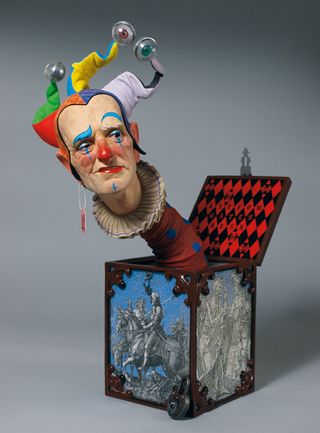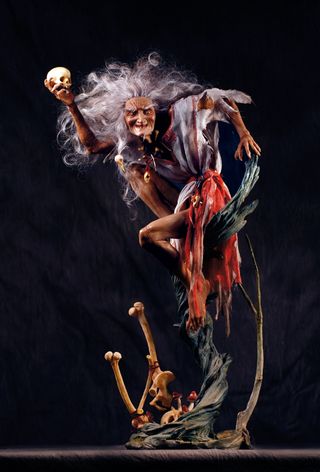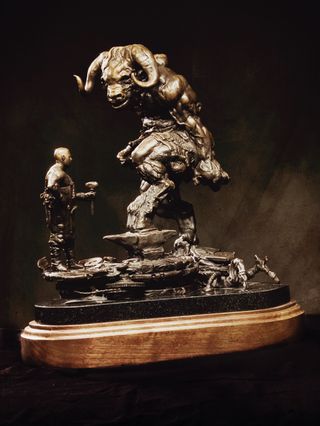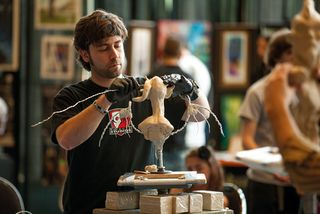How to carve out a career in model making
We may live in a digital age, but fantasy sculpture is proving more popular than ever: meet the artists leading the charge.

Jarrod and Brandon Shiflett's hugely successful careers as sculptors began with just one book: Creature Core by Yasushi Nirasawa.
Yasushi and his contemporaries were the Japanese sculptors who plucked characters from the pages of the Shifletts' favourite comic books and brought them to 3D life.
Win clients & work smarter with our FREE ebook: get it now!
Their work had a profound influence on the young brothers. But more than this, it showed sculpture – specifically sculpture tied to comics and video games – could be a serious and credible artistic endeavour.
"We still look up to those guys as masters of the craft, and a couple of pieces were hugely influential to us," reveals Jarrod. "They were an Incredible Hulk sculpture by the late Japanese sculpting icon Moto Hata, and Venom, from Spider-Man, sculpted by the great Taishiro Kiya.
"Then we came across Creature Core, which included sculpts from Yuji Oniki and Takayuki Takeya, and it was a revelation to us. It drove home the point that what we were doing could be a great art form."

Early days
When the brothers began working in wire and clay, the current commercial statue market didn't exist. They recall going to San Diego Comic-Con in the early 90s and seeing very few mass-produced models.
Get the Creative Bloq Newsletter
Daily design news, reviews, how-tos and more, as picked by the editors.
There were "a couple of years of gruelling trial and error" between the early figures they created and the Marvel characters that eventually cemented the Shiflett's reputation as industry leaders.
But they still use the same materials: "Super Sculpey Firm clay, aluminium alloy wire, floral wire to hold it all together, and a whole lot of super glue."
It's with these materials that Jarrod and Brandon took gold in the dimensional art category at Spectrum Fantastic Art Live 3 for their piece The Vertical Man-Tank, 1892.

Passion is key
"The Shiflett Brothers are to sculpting what Frank Frazetta is to painting," said John Howe, concept designer on The Lord of The Rings trilogy. So how do they do it? The key is to sculpt what you love.
"We love comics and sci-fi and fantasy stuff," Brandon says, "so that's what we sculpt." The brothers' top tip, for novice sculptors, centres on anatomy reference: you can't have enough of it. Use fitness magazines to study how muscles look and move under the skin.
For creature anatomy – real or otherwise – use biological animal forms. As Brandon puts it: "Once you start faking anatomy, it becomes immediately obvious."
Perhaps surprisingly, the Shifletts say they're not particularly proficient at drawing and painting. If a client asks for a rough sketch of prospective work, they prefer to create and present a smaller model showing how the final piece will look.

Next page: more secrets to becoming a master sculptor

Thank you for reading 5 articles this month* Join now for unlimited access
Enjoy your first month for just £1 / $1 / €1
*Read 5 free articles per month without a subscription

Join now for unlimited access
Try first month for just £1 / $1 / €1
The Creative Bloq team is made up of a group of design fans, and has changed and evolved since Creative Bloq began back in 2012. The current website team consists of eight full-time members of staff: Editor Georgia Coggan, Deputy Editor Rosie Hilder, Ecommerce Editor Beren Neale, Senior News Editor Daniel Piper, Editor, Digital Art and 3D Ian Dean, Tech Reviews Editor Erlingur Einarsson, Ecommerce Writer Beth Nicholls and Staff Writer Natalie Fear, as well as a roster of freelancers from around the world. The ImagineFX magazine team also pitch in, ensuring that content from leading digital art publication ImagineFX is represented on Creative Bloq.
